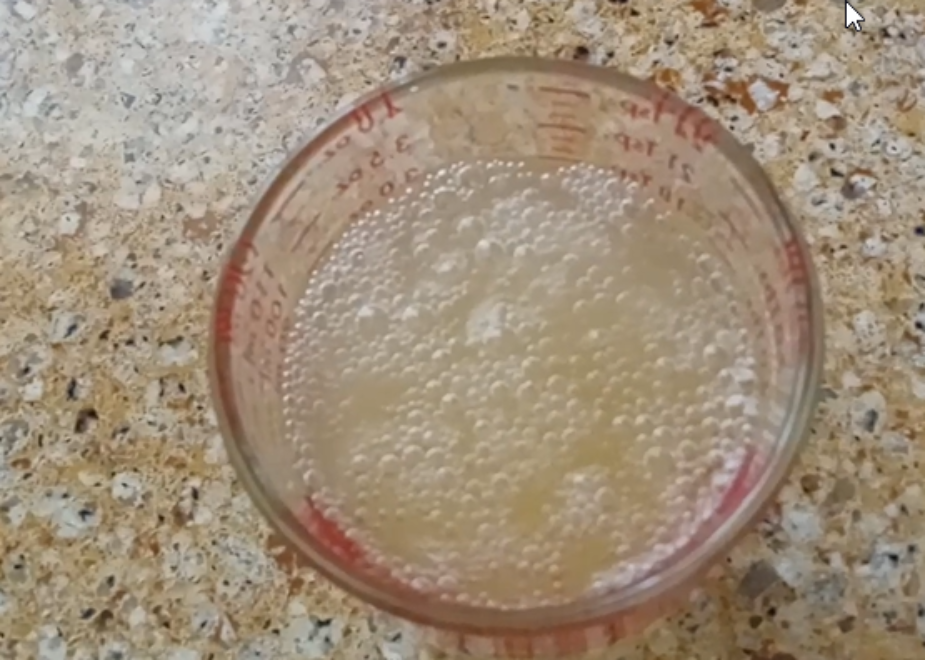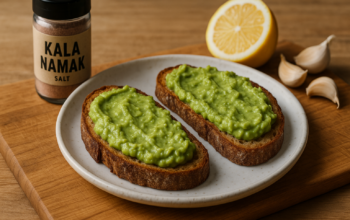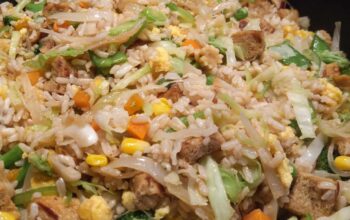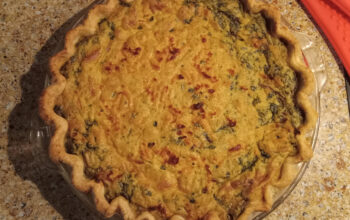FlaxQuaEgg (Baking/Meringue)
So, here is a recipe I promised you all a few weeks back. I wanted to deliver and give you the information on why I love this concoction. Sure, you may still use flax seeds or aquafaba alone, but I love this combination.
FlaxQuaEgg offers the perfect blend of two powerful plant-based ingredients for baking: flaxseed gel and aquafaba. Together, they create a versatile substitute that mimics both the binding and aerating properties of eggs. Flaxseed gel, made by simmering whole flaxseeds in water, produces a thick, viscous liquid rich in fiber and healthy fats, which works as an excellent binder (Smith, 2020). Meanwhile, aquafaba, the liquid from canned chickpeas, is known for its remarkable ability to whip into foamy peaks, making it ideal for light, airy textures like meringues and fluffy cakes (Jones & Patel, 2019). This simple, homemade combination ensures that your egg-free baking results in the right structure, moisture, and stability.
The Science Behind Aquafaba’s Binding Power
Aquafaba serves as an egg substitute due to its protein, starch, and soluble fiber content, which allow it to act as a binder, emulsifier, and leavening agent (Brown, 2021). When whipped, its proteins denature and form a network that traps air, much like egg whites, making it perfect for foams and meringues. The presence of natural starches and soluble fibers also contributes to thickening and moisture retention, ensuring that baked goods hold together well. Additionally, aquafaba contains saponins, which stabilize emulsions and enhance its ability to mix fats and liquids evenly, leading to smooth, well-incorporated batters. The thicker the aquafaba (e.g., reduced by simmering), the more effective it becomes at holding ingredients together in cookies, breads, and other baked goods (Lee et al., 2022).
Nutritional Benefits of FlaxQuaEgg
Aside from its baking benefits, FlaxQuaEgg is packed with nutrition. Flaxseed gel is an excellent source of omega-3 fatty acids, fiber, and lignans, all of which support heart health, digestion, and anti-inflammatory functions (Miller & Thompson, 2018). Aquafaba, while lower in fat and protein than eggs, is a low-calorie, cholesterol-free alternative that still provides essential hydration and binding properties. Here’s the estimated nutritional breakdown for one batch of FlaxQuaEgg:
- Calories: 84
- Carbohydrates: 5.2g
- Protein: 3.6g
- Fat: 6.2g
- Fiber: 3.8g
- Omega-3 Fatty Acids: 3.2g
This makes it a nutrient-dense, heart-healthy, and allergy-friendly substitute for traditional eggs (Harris, 2021).
How to Use FlaxQuaEgg in Baking
Using FlaxQuaEgg is easy—generally substitute 3 tablespoons per egg in recipes such as cakes, cookies, muffins, pancakes, and more. However, I am still experimenting with this and in a cake I made recently that called for two eggs, just using a one egg equivalent of this substitute was perfect. If your FlaxQuaEgg mixture is a tight gel, then you may want to substitute 1.5 tablespoons per egg, but if the mixture is a loose gel, then use the general measurement of 3 tablespoons. You may experiment on this for yourself. The flaxseed gel contributes structure and moisture, while aquafaba helps with aeration and fluffiness. Unlike some egg substitutes that can alter flavor, FlaxQuaEgg has a neutral taste, making it suitable for both sweet and savory dishes (Nguyen & Kim, 2020).
A Simple, Sustainable Alternative
Beyond its nutritional value, FlaxQuaEgg is a sustainable and cost-effective solution for those looking to reduce food waste and avoid animal products. Instead of discarding the liquid from canned chickpeas, it can be repurposed into a functional baking ingredient. Likewise, flaxseeds are a pantry staple with a long shelf life, making this recipe easy to prepare at home. Whether you’re vegan, have egg allergies, or simply want to experiment with plant-based baking, FlaxQuaEgg is an excellent choice for achieving great texture and consistency in your favorite recipes. Try it today and see the magic for yourself!
FlaxQuaEgg
Ingredients:
- 1 ½ cups water
- 2 Tablespoons flax seeds (whole)
- ¾ cup aquafaba (thickened water; usually liquid from one 15 oz. can)
Instructions:
- In a saucepan, combine the water and flax seeds. Bring the mixture to a boil over medium-high heat.
- Reduce the heat to medium and let it simmer for 10 minutes, stirring occasionally.
- Immediately strain the mixture through a fine-mesh sieve into a jar, discarding the flax seeds.
- Add ¾ cup of aquafaba (either thickened chickpea water or the strained liquid from a 15 oz. can of chickpeas) and mix well.
- Use 3 tablespoons of FlaxQuaEgg as a substitute for one egg in baking or meringue recipes.
References
Brown, L. (2021). The chemistry of egg alternatives: How plant-based ingredients replace eggs in baking. Food Science Journal, 45(3), 233-245.
Harris, M. (2021). Nutritional comparison of egg substitutes and their benefits. Nutrition Today, 56(4), 178-185.
Jones, R., & Patel, S. (2019). Aquafaba: Properties and applications in food production. Journal of Food Innovation, 32(2), 110-123.
Lee, H., Kim, Y., & Park, S. (2022). Enhancing the binding properties of aquafaba through reduction techniques. Journal of Culinary Science, 28(1), 56-70.
Miller, J., & Thompson, D. (2018). Flaxseed: A superfood with numerous health benefits. International Journal of Nutrition, 12(1), 45-60.
Nguyen, T., & Kim, R. (2020). Plant-based substitutions in baking: Functionality and sensory attributes. Food Research and Development, 14(3), 92-105.
Smith, A. (2020). Flaxseed gel as an egg replacement: A structural analysis. Baking Science Reports, 7(2), 58-67.





